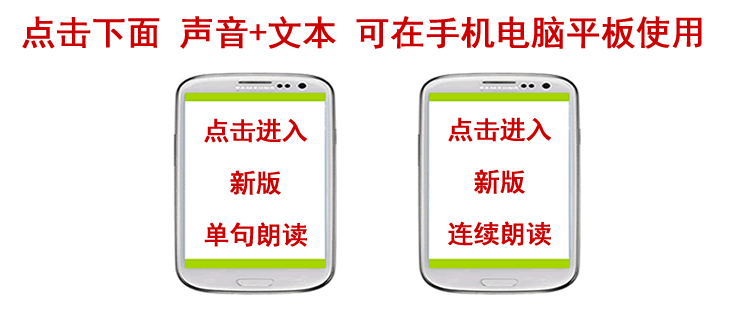特别广播英语第 382 课:Following un Ancient Footsteps
长相“丝”守:丝绸之路话从头-1 One of the world's most ancient and historically important trade routes, the Silk Road conjures up exotic images of camel caravans, windswept deserts, and such legendary figures as Genghis Khan and Marco Polo. 世界上最古老,历史上最重要的贸易路线之一──丝绸之路,总给人一种富有异国情调的印象:骆驼商队、狂风肆虐的沙漠,还有诸如成吉思汗和马可波罗等传奇人物。
Extending as far as the Indian kingdoms in the west, to present-day Xian in China in the east, the Silk Road was already a crossroads of Asia by the third century B.C. 丝绸之路绵亘远长,西至印度王国,东到中国现在的西安,早在公元前三世纪,丝绸之路就已经成为了亚洲交通的十字路口。
Skirting the edges of the harsh and inhospitable Taklimakan desert, the Silk Road actually had several different branches, each passing through different oases. 丝绸之路其实有数条支线,它们分别沿着环境恶劣、不适合人类居住的塔克拉玛干沙漠外缘,穿越不同的绿洲。
All roads began in Changan (Xian). The northern route wound its way through places such as Turfan and Kuqa before finally ending at Kashgar. 所有的路线都是始于长安(西安):北线蜿蜒经过了吐鲁番、库车,最后到达喀什格尔。
The southern route followed the lower fringes of the Taklimakan to eventually end up at the same destination. 南线沿着塔克拉玛干下缘前行,到达同一终点。
Numerous other routes were also plied throughout the ages, reaching all the way to Samarkand, Tashkent, India, and the Caspian Sea. 其它的许多支线也是历代都通行的,通往撒玛尔罕、塔什干、印度, 及里海等地。
Silk was not the only commodity traveling the Silk Road. Other goods such as exotic animals, ivory, and gold were also transported along the route. 丝绸并不是丝绸之路上运送的唯一商品。其它货物如奇珍异兽、象牙,及黄金等也通过丝绸之路运输。
It was silk, though, which fascinated the Romans. Agents were sent from Rome to explore the route and to obtain the material at a lower price. 不过格外令罗马人着迷的还是丝绸。罗马派遣代理商探测这条路线,并以较低的价格购得丝绸。
The Romans, however, did not give the Silk Road its name. The term was actually coined by the 19th-century German scholar Baron Ferdinand von Richthofen. 然而,“丝 绸之路”的名称并不是罗马人起的。这个名称是19世纪时一名叫Baron Ferdinand von Richthofen的德国学者首创的。

